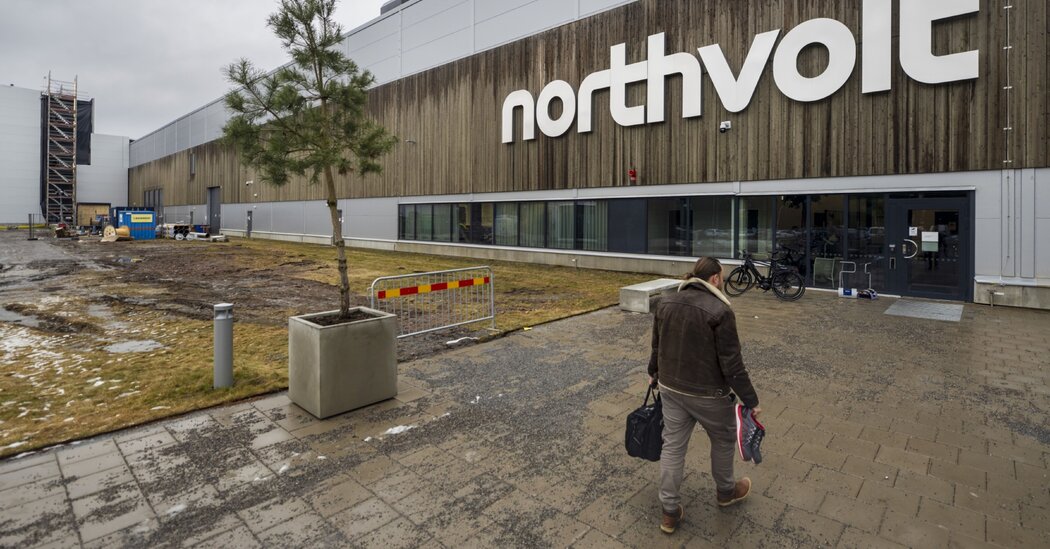‘A Beautiful Place That Has a Dragon’: Where Hurricane Risk Meets Booming Growth
Hurricanes have always struck the shores of the United States.
But in recent decades, the combination of climate change and a growing coastal population has made them far more damaging — particularly in one corner of the Atlantic coast.
These two metros, known for their striking coastlines, have been regularly battered by hurricanes this century.
They also have something else in common: Both are among the fastest-growing coastal metros in the United States since 2000.
The hurricanes keep coming, and the people, too: The fastest-growing places along the Atlantic coast this century are also among the most hurricane-prone.
Between 2016 and 2022, the five hurricanes that hit the Carolinas cost the two states over $33 billion in damages in current dollars, displaced hundreds of thousands of people and led to the deaths of more than 90, government data shows.
There’s every reason to expect more damage in coming years: A warming climate adds moisture to the air, unlocking the potential for wetter and more powerful storms. And rising sea levels make storm surges more damaging and coastal flooding more frequent.
And the newcomers will keep coming: One 2022 study projected that by 2050, population growth will increase the number of Americans exposed to flooding nearly four times as much as climate change will alone.
Simply put, there are many more people living along the paths of hurricanes than ever before. And this booming coastal population is, by many accounts, a larger contributor to rising hurricane risks than climate change.
“It’s always climate change plus something, and we’re moving more people into harm’s way than out,” said Kathie Dello, North Carolina’s state climatologist.
Kure Beach, N.C., at low tide.
Local officials say they are struggling to keep up with the growth. They can try to manage the floodplain, communicate the risks, regulate construction and prepare for disasters. But the one thing they can’t seem to do is stop people from moving here.
Many retirees are drawn to the Carolinas’ beaches and waterways, moderate temperatures and low taxes. Between 1990 and 2020, the number of people 65 and older grew by nearly 450 percent combined in Horry County, S.C., and adjoining Brunswick County, N.C.
When Gail Hart moved from Arizona to retire in Wilmington, N.C., in 2017, she hadn’t considered the hurricane risk. “I wanted to be near a beach,” she said. “I wanted a community.”
Gail Hart with her dog Tula in the Del Webb retirement community in Wilmington, N.C.
The next year, Hurricane Florence made landfall in the Wilmington metro area. Many neighborhoods flooded. In some places, three feet of water entered homes. Emergency officials rescued over a thousand residents.
Ms. Hart evacuated. She was fortunate: Her home suffered only minor wind damage. But the experience changed her view of living there. She installed storm shutters and a generator, and bought flood insurance. And yet, like so many others, she has stayed despite the storm risks.
“I don’t let it affect my life unless there’s a hurricane coming,” she said.
Ms. Hart is far from alone. When she arrived, there were about a dozen homes in her retirement community. Today there are over 500.
In a retirement community being built across the road, acres of pine forests have been cleared to develop homes along the Cape Fear River.
New homes on the banks of the Cape Fear River in Wilmington, N.C.
Nearby, marshland with ghost forests of dead trees was up for sale as “riverfront condo land.”
Ghost forests are what remains of woodlands when saltwater poisons the roots of trees.
Wilmington is part of New Hanover County, the most densely populated of the state’s coastal counties. Nearly 40 percent of its homes risk being severely affected by flooding in the next 30 years, according to the First Street Foundation.
“There’s just not a lot of area left,” said Steven Still, director of emergency services for the county. “So you’re developing in the fringe areas.”
The escalating costs of storms raise a difficult question for these growing coastal communities: How do you balance growth with safety?
The combination of climate change and development in risky areas is making it “a huge challenge” to keep residents safe, said Amanda Martin, North Carolina’s chief resilience officer.
Hurricanes near U.S. counties, 1950-2022
Coastal Carolina counties have some of the highest hurricane frequencies in the country.
Source: Upshot analysis of the National Hurricane Center’s Atlantic hurricane database
The map shows the number of Atlantic hurricanes whose paths came within 60 nautical miles (69 miles) of each county.
It’s not just that people are moving to hurricane-prone areas. The growth itself can make flooding worse. Cutting down trees and paving over wetlands takes away open land that would otherwise absorb rainfall.
“We just seem to be going through this vicious cycle that is becoming more vicious with the amount of people and infrastructure we put in these areas,” Mr. Still said.
Federal law permits people to build in flood zones, so long as they meet certain minimum standards. In return, the government offers them flood insurance through a federal program that is over $20 billion in debt — largely due to escalating hurricane damages.
While the National Flood Insurance Program was originally intended to discourage floodplain development, in practice it has done the opposite by removing a lot of the financial risk involved, said Jenny Brennan, a climate analyst at the Southern Environmental Law Center.
States have a few options to discourage people from building in flood zones. They can create more stringent building requirements, or they can buy up and preserve undeveloped land. But these measures are expensive, and rely on political will or the willingness of landowners to sell.
One way that states can move residents out of harm’s way is by offering to buy out their homes and permanently converting that land to open space. But a study this year found that for every home bought out in North Carolina between 1996 and 2017, more than 10 new ones were built in the state’s floodplains.
The growth also makes it more difficult to evacuate when storms strike. In these booming coastal counties, residents and local officials say that roads and bridges are not keeping pace with the growth.
“Our biggest problem is our infrastructures not being able to keep up,” said David McIntire, the deputy director of emergency management for Brunswick County, the fastest-growing coastal county in North Carolina this century and part of the Wilmington metro.
The state has undertaken a multiyear project to add two lanes to Highway 211, the main evacuation route for the region. Mr. McIntire said the state and local departments were “having to play catch-up” after years of failing to plan ahead.
In neighboring New Hanover County, his counterpart Mr. Still is grappling with a shortage of affordable housing, which he said was making it “exponentially difficult” to shelter people displaced by disasters.
After a disaster, the surge in demand for short-term housing drives up already high rents. Poorer residents often rely on the state and local governments for assistance with evacuation and housing.
The problem lies in where to house them. “If there is zero housing availability in the community right now,” Mr. Still said, “where do you put 100,000 people?”
The housing crunch is one of many tensions playing out between wealthy coastal communities and those who live nearby.
April O’Leary lives in Conway, S.C., an inland city in Horry County, a half-hour drive from Myrtle Beach.
The county makes up the Myrtle Beach metro area, which was the fastest-growing coastal metro nationally between 2000 and 2020 and is one of the fastest-growing places in the country annually. And the growth is projected to continue.
Horry County is large and flat: Nearly a quarter of its land lies within a floodplain.
In inland towns like Conway, S.C., floodwaters can stay long after a hurricane is gone.
After Hurricane Florence made landfall, it took about a week for the rainwater to flow down to Conway. But the water stayed for over a week.
“It sits for a while and it just destroys everything,” Ms. O’Leary said.
Water entered her home, flooding the first floor and a bedroom. Her husband and son evacuated to Myrtle Beach, while she stayed for a few days to document the floods.
Afterward, there were large piles of debris lining street after street in her neighborhood, filled with ruined flooring, kitchen cabinets and bathroom fixtures.
When her son’s elementary school reopened and he saw the devastation in the neighborhood, she said he stopped smiling and became quieter for months.
Down the street from April O’Leary’s home, in Conway, S.C., the flood water line from Hurricane Florence was still visible.
After the flooding, Ms. O’Leary founded Horry County Rising, a political organization that campaigned for the county to adopt stricter regulations for floodplain construction. Much of the flooding in the Carolinas during Hurricane Florence occurred outside of federal flood zones, where few people have flood insurance or homes that are protected from flooding.
In 2021, the county expanded its flood zone boundaries to include places that flooded during Hurricane Florence. And it required new homes built there to have their lowest floor three feet above the high water mark.
The changes applied to all unincorporated parts of the county. But they faced pushback from local developers because of raised building costs. The county recently voted to lower the height requirements to two feet, after legal pressure from a developer.
The flooding and growth also affect rural communities that have been rooted in the Carolinas for generations. In Bucksport, S.C., a small inland town in Horry County, Kevin Mishoe is a third-generation farmer and former chair of the Association for the Betterment of Bucksport.
He said the newer building codes would pay dividends in future floods, but they would also make home ownership far more expensive for people in lower-income communities like Bucksport.
Bucksport sits between two major rivers, nestled against wetlands and tidal forests. Mr. Mishoe lives with his wife in a mobile home that flooded during Hurricane Matthew in 2016 and Hurricane Florence in 2018.
Gina and Kevin Mishoe outside their home in Bucksport, S.C.
Mr. Mishoe says he believes banks are denying loans to residents because of their location in a floodplain, a phenomenon he called “bluelining.”
Meanwhile, he said, locals are being “bombarded” with offers from developers and private equity companies to buy their land.
“All of a sudden land that you’re telling us is almost worthless because you’re in a flood zone, everybody’s trying to buy,” he said.
The area is considered prime real estate because of its access to water. This year, the county expressed support for a highway that would connect Myrtle Beach to inland parts of the county. The highway is expected to cut through Bucksport and its adjoining wetlands, and bring added development to the region.
The town’s residents emphatically do not want to sell their land, Mr. Mishoe said. Their ancestors have held on to this land for generations, and they intend to stay.
Bucksport’s flooding problem began in 2015. But there are coastal Carolina communities that have endured regular hurricanes for over a century.
Karen Willis Amspacher lives on Harkers Island in Carteret County, N.C. — one of the most hurricane-prone counties in the country.
The island is part of a string of low-lying rural communities near the Outer Banks that locals call Down East. The communities are connected by Highway 70, a dredged road that floods several times a year.
Highway 70 outside Stacy, N.C., in Carteret County.
Ms. Amspacher is a fifth-generation resident of the island and the director of the Core Sound Waterfowl Museum. There are a lot of newer residents, she said, moving into large houses on stilts, with generators and flood insurance. Some houses are second homes or vacation properties.
The construction boom has driven up costs for locals. “The fear and threat of sea level rise or storms doesn’t hinder any of it,” she said.
A raised home under construction on Harkers Island, N.C.
A new bridge under construction earlier this year will connect Harkers Island to the mainland, to improve evacuations during hurricanes.
While the new homes may be safer, Ms. Amspacher said, many of the newcomers are isolated from the emotional trauma that her community experiences during a hurricane.
“This is a piece of property to them,” she said. “It’s not their family inheritance. It’s not their home. It’s not where they hope their children will stay and grow up.”
Ms. Amspacher has had to evacuate her home in three past hurricanes. But she’s not planning to leave for the next one. She said staying during storms was a way to protect property from damage, and was part of her community’s cultural identity.
“These hurricanes make these communities what we are,” she said.
Back in Wilmington, Sharon Valentine is also no stranger to hurricanes. She owned a large animal farm near Fayetteville, N.C., which was devastated by Hurricane Fran in 1996.
So when she and her partner decided to retire in Wilmington’s Del Webb community in 2017, they knew the risks.
Many others have followed since. “There’s a mass migration down here,” she said.
Ms. Valentine organizes annual hurricane training for these newer arrivals. The community members have evacuation plans and look out for one another.
Sharon Valentine and Leonard Bull keep an emergency go bag, which they call a “calamity box,” at their home in Wilmington.
She, too, said the local infrastructure hadn’t kept up with growth. There are two small bridges on either end of River Road that serve as the main evacuation routes for her community. She is concerned that they may flood in a major storm.
“If we really ever have a bad one, we’re going to have to get out of here,” Ms. Valentine said.
Still, when she thinks about all the newcomers, she sympathizes with their reasons for moving here.
“It is a beautiful place that has a dragon emerge periodically,” she said. “And so you weigh your risks.”


